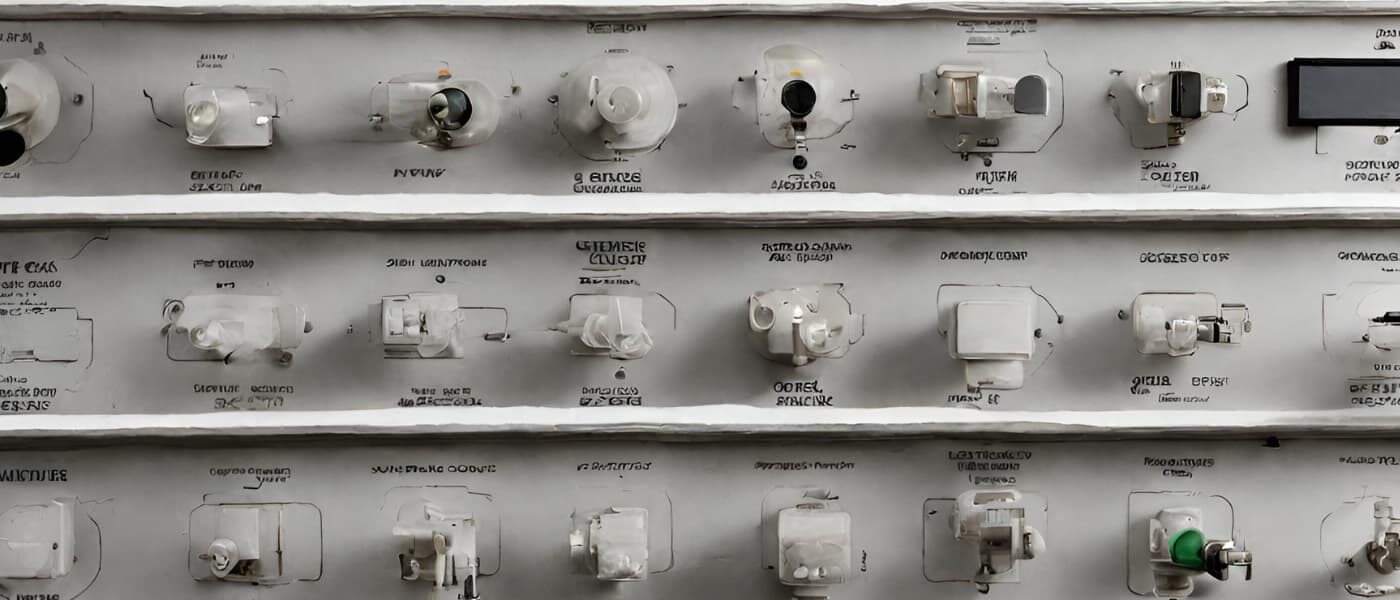The utilization of smart ontrol supplies has revolutionized the management of industrial processes. From traditional control valves to modern marvels, these supplies have evolved significantly. In this blog post, we’ll delve into the pivotal role of smart control supplies in enhancing process control, optimizing resource utilization, and fostering a more connected and efficient industrial environment. The synergy of technology and ontrol supplies has redefined precision and efficiency, making them indispensable tools in today’s ever-evolving industries.
The Evolution of Control Supplies
Control supplies have come a long way from their humble beginnings. Traditionally, control valves were manually operated, requiring constant attention and adjustments. The evolution of control supplies introduced pneumatic and electronic control systems, offering greater reliability and accuracy.
However, it is the emergence of smart control supplies that has truly transformed the landscape. These modern marvels integrate sensors, data analytics, and connectivity, ushering in a new era of automation. They have the capability to adapt, learn, and communicate, making them indispensable in today’s complex industrial processes.
Understanding Smart Control Supplies
Smart control supplies are a fusion of hardware and software, designed to monitor, control, and optimize industrial processes. At their core, these supplies are equipped with sensors that gather real-time data about the system they regulate. This data is then processed and analyzed using sophisticated software algorithms.
What sets smart control supplies apart is their connectivity. They can communicate with other devices, systems, and even remote operators. This connectivity allows for remote monitoring, control, and data retrieval, making them invaluable tools in industries where efficiency and precision are paramount.
Key Features of Smart Control Supplies
- IoT Connectivity: Smart control supplies are part of the Internet of Things (IoT) ecosystem. They can transmit data to centralized systems or cloud platforms, enabling remote monitoring and control. This connectivity enhances accessibility and responsiveness.
- Data Analytics: The data collected by smart control supplies is not just for show. Advanced analytics can turn this data into actionable insights. Predictive maintenance, performance optimization, and anomaly detection become possible, improving overall system reliability.
- Real-Time Monitoring: Smart supplies offer real-time monitoring capabilities. Operators can access critical data instantly, allowing for timely interventions in case of deviations or emergencies. This real-time feedback loop enhances process control.
Benefits of Implementing Smart Control Supplies
The adoption of smart control supplies brings forth a multitude of benefits for industries:
- Enhanced Operational Efficiency: Smart control supplies optimize processes, leading to increased efficiency and reduced waste. They can make real-time adjustments to parameters, ensuring that resources are used efficiently.
- Reduced Downtime: Predictive maintenance and real-time monitoring reduce unexpected downtime. Equipment issues can be addressed proactively, minimizing production disruptions.
- Cost Savings: Improved efficiency and reduced downtime translate into cost savings. Industries can allocate resources more effectively, leading to better financial performance.
- Better Decision-Making: Access to comprehensive data allows for informed decision-making. Operators can make strategic choices based on real-world insights, leading to improved process control.
Challenges and Considerations
While the advantages of smart control supplies are clear, there are challenges to consider:
Cybersecurity: With increased connectivity, the risk of cyber threats grows. Protecting smart control supplies from cyberattacks is crucial to maintaining system integrity.
Compatibility: Integrating smart control supplies into existing systems may require careful planning and compatibility assessments. Legacy systems may need upgrades or adaptations.
Personnel Training: Smart control supplies demand a certain level of expertise. Operators and maintenance personnel need training to effectively utilize these advanced tools.
Future Trends and Innovations
The world of smart control supplies is continuously evolving. Emerging trends and innovations promise even greater capabilities:
- Artificial Intelligence (AI): AI algorithms can enhance decision-making by analyzing complex data patterns. Smart control supplies will become more intelligent, adapting to changing conditions with greater precision.
- Edge Computing: Edge computing allows data processing to occur closer to the data source. This reduces latency and can enable real-time decision-making at the edge of the network.
- Human-Machine Collaboration: The future may see increased collaboration between humans and smart control supplies. Augmented reality (AR) and virtual reality (VR) interfaces can provide intuitive ways for operators to interact with systems.
Conclusion
In conclusion, smart control supplies have ushered in a new era of industrial automation, enhancing process control and efficiency across various industries. Their ability to collect and analyze data in real-time, coupled with IoT connectivity, provides industries with unprecedented control and visibility over their processes.
While challenges such as cybersecurity and compatibility exist, the benefits of adopting smart control supplies are undeniable. As technology continues to advance, the integration of AI, edge computing, and human-machine collaboration will further push the boundaries of what smart control supplies can achieve.
